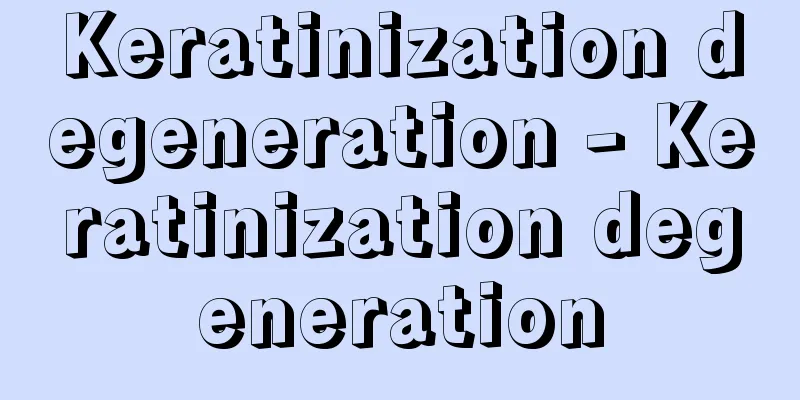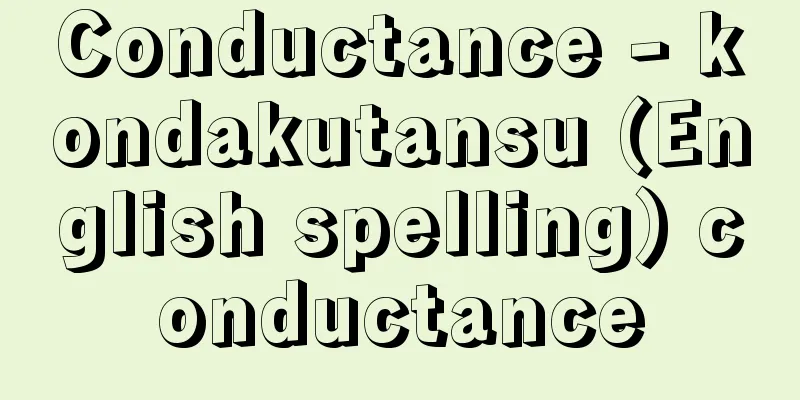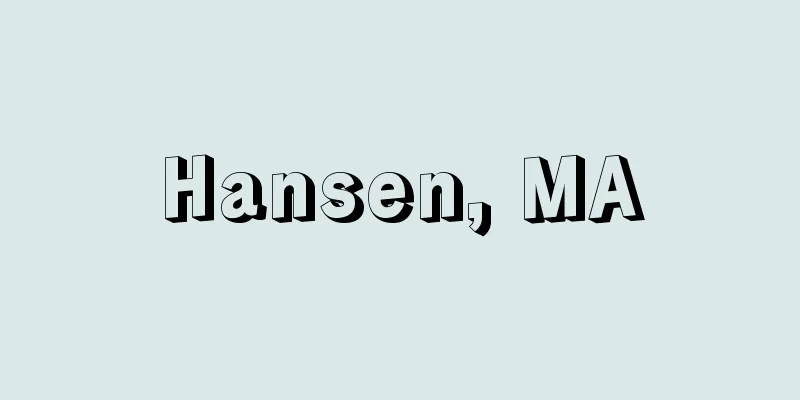Operant conditioning

|
Operant conditioning is a method of changing an individual's spontaneously emitted response (behavior measured by some kind of device) by accompanying that response with a certain event. It is also called instrumental conditioning. The subject of operant conditioning is an individual's voluntary behavior (operant behavior). All responses that bring about a common result belong to the same response class, and such a response class is called an operant. It was in the 1930s that Skinner, BF, pointed out that operant conditioning is a different learning process from respondent conditioning (a process of changing involuntary behavior) discovered by Pavlov, IP. To distinguish his new conditioning from the conditioning (conditioned reflex) discovered by Pavlov, Skinner named it "operant conditioning" and "respondent conditioning" to express the characteristics of each conditioning. These names were coined to express the characteristics of an individual acting voluntarily and actively on the environment (voluntary behavior, action) and the characteristics of a passive response to stimuli (involuntary behavior, reflex), respectively. In this way, the two conditionings can be called the "principle of action" and the "principle of reflex", respectively. However, before Skinner formulated operant conditioning, pioneering research on it was conducted by Thorndike, EL. [Thorndike's pioneering research] Thorndike was the first to attempt to answer the question of how human and animal behavior is formed and maintained. In 1898, he published his doctoral dissertation "Animal Intelligence: An Experimental Study of Association Processes in Animals", summarizing the results of experiments using cats, dogs, and chicks as subjects. This research used an experimental device well known as "Thorndike's puzzle box". At that time, no American universities had animal experiment facilities, and Thorndike conducted his experiments in the basement of the home of Professor James W. at Harvard University (animal laboratories were not established in American universities until 1898). This device was equipped with several mechanisms, and by removing these in a certain order, the door to the problem box would eventually open. A hungry cat was placed in the problem box and a food dish was placed in front of the door, and the cat would try to get out of the box. At first, it would move around haphazardly, but sometimes the mechanism would come loose by chance and it would be able to get out. After eating the food, it would be placed back in the problem box and the time it took to get out was measured. By repeating this process, the cat would eventually be able to remove the mechanisms in order and get out, and learning would be achieved. In the problem box in Figure 1, the cat had to step on the pedal, pull the string, or push the bar up or down to get out. At first, the responses were random, but soon they became regular and rapid. This process is learning, and the learning curve in Figure 1 shows the time it took to get out of the problem box (time required) on the vertical axis and the number of training trials on the horizontal axis. It can be seen that the time it took to get out of the problem box became shorter with each training trial. Thorndike was the first to show a learning curve in this way, but at the same time he was also interested in the overall pattern of the learning curve, that is, the way it changed (the response rate used in operant conditioning, i.e., the change in the number of responses per unit time). In addition, the manipulation of making the cat hungry (motivation) prior to the experiment can be said to be a pioneering manipulation of the "motivation manipulation" that was later used in operant conditioning research. The learning of cats in the problem box that Thorndike used was named trial-and-error learning by Morgan, CL. In this situation, behavior is divided into units called trials, and between trials, the individual cannot spontaneously perform the behavior. This type of experimental situation is called a trial-response situation. Later, Thorndike explained this type of learning using a behavioral principle called the law of effect. The law of effect states that "a response that is satisfying to the individual will, other things being equal, be more strongly associated with the situation, and therefore more likely to occur again if the animal is placed in that situation again." This means that the association between the situation and the response is strengthened by the result of the response. This is another way of expressing the principle of reinforcement in operant conditioning. However, it took another quarter century for this to be properly recognized, until Skinner's systematization of operant conditioning. [Skinner's systematization of operant conditioning] In the American Psychologist (1956), Skinner introduced the history of his research into the systematization of operant conditioning, including some very interesting anecdotes, so this paper is important for understanding the history of research into operant conditioning. Skinner's research started with the study of the startle reflex from the framework of conditioned reflexes. The apparatus used at that time was a straight track shown in Figure 2a. In this apparatus, after the rat reached the target point and ate the food, the experimenter had to return it to the starting point. So, he devised the return-type straight track shown in Figure 2b so that the experimenter would not have to return it. In this apparatus, the rat runs along the straight track B and eats the food at point C. After finishing eating, the rat passes through the return track A and runs along the straight track again. At this time, he found that there was a certain regularity in the behavior of the rat after eating the food, which triggered the idea of operant conditioning. In this way, by devising the return-type straight track, the rat's behavior was no longer interrupted, which led to the free response situation described below. Next, he devised a seesaw-shaped runway (Fig. 2c) that could automatically present food without bothering the experimenter. This device moved a disk containing food by the seesaw movement of the rat as it moved, making it possible to automatically present food. When this device malfunctioned and food was not presented, he was fortunate to accidentally obtain an extinction curve for the response, and to discover a new fact that the response can be maintained even if food is presented only occasionally (intermittent reinforcement). Furthermore, he devised a way to automatically record the presentation of food, which led to the later development of the cumulative record of the response (Fig. 2e). Thus, in the early 1930s, the prototype of the experimental box shown in Fig. 2d (Skinner, 1932), which was later called the "Skinner box" by Hull, CL, was created. Figure 3 shows a schematic diagram of an experimental box for pigeons (a Skinner box). When a pigeon pecks at a circular window (a key) that is illuminated from behind, a feeding device is activated, allowing the pigeon to eat food for a set period of time (usually about three seconds). When a hungry pigeon is placed in the experimental box, it initially moves randomly and does not necessarily peck at the key, but if it happens to peck at the key, the food box is presented. After this happens several times, the pigeon eventually begins to peck at the key. In other words, operant conditioning has been established. [Three-term contingencies of reinforcement] The presentation of food in conjunction with a spontaneous response is called reinforcement, and the mechanism by which food is presented when a pigeon pecks a key is called contingencies of reinforcement. In this case, the food strengthens the response, that is, it can be said to be a reinforcer. In this way, for operant conditioning to take effect, a spontaneous response and the resulting presentation of a reinforcer are necessary, and the establishment of this relationship also establishes a cue (discriminative stimulus) for spontaneous response. The relationship between these three terms, i.e. discriminative stimulus-response-reinforcer, is called a three-term contingency of reinforcement. Figure 4 shows a schematic diagram of ternary reinforcement contingencies, which is a basic paradigm of operant conditioning. This schematic diagram represents the issues in operant conditioning research, such as what kind of spontaneous response is produced under what kind of cue stimulus, and what kind of reinforcer strengthens the response. Within the ternary reinforcement contingencies, the relationship between the response and the reinforcer is a question of the reinforcement schedule, which determines how the reinforcer is presented, and the relationship between the discriminative stimulus and the response is a question of stimulus control, which determines how the discriminative stimulus controls the response. Other factors that influence such reinforcement contingencies include motivational manipulations, such as making the subject hungry, and emotional manipulations, such as the presentation of aversive stimuli such as electric shocks, which are necessary to maintain the effect of the reinforcer in strengthening the response. Here, stimuli and responses are defined based on the class concept of set theory. In other words, responses that bring about a common result (such as the presentation of a reinforcer), whether it be pressing a lever with the hand or biting the lever with the mouth, all belong to the same response class. Such response classes are called operants. As for stimuli, any common cue that triggers a spontaneous response, such as a red light or the word "stop," all belong to the same stimulus class. In contrast to behaviors that are formed and maintained by such contingencies, in humans, behaviors can also be formed and maintained through language. For example, the linguistic expression "stop at a red light and start walking at a green light" describes how to behave in order to avoid traffic accidents. Behaviors that are formed and maintained by such linguistic expressions are called rule-governed behaviors, because they are not behaviors acquired by exposure to contingencies (by experiencing danger), i.e., contingency-shaped behaviors. The experimental apparatus (experimental box) shown in Figure 3 can be said to embody the idea of viewing behavior as an event occurring on a time axis, rather than as a spatial movement. Spontaneous responses such as a pigeon pecking a key or a rat pressing a lever are events that occur on a time axis. Therefore, in operant conditioning, the strength of a response is expressed as the number of responses per unit of time (for example, one minute), that is, the response rate. In addition, by devising a method of expressing responses cumulatively over a time axis, it has become possible to record response patterns from moment to moment. [Free response situations and trial response situations] The experimental situations described above are called free response situations, but the conditioning in trial response situations, in which behavior is divided into trials, such as the experiment using Thorndike's problem box, is sometimes distinguished as instrumental conditioning. This distinction may seem to be merely a procedural difference, but it is important because it has been shown that the effects on behavior are different (Hachiya, S., & Ito, M., 1991). [Formation of new responses] In operant conditioning, an individual is not exposed to reinforcement contingencies unless the response is spontaneous. In this sense, contingencies are chance events, but in order to form new responses, it is necessary to use a method called successive approximation, which successively changes the reinforcement contingencies. For example, first, the pigeon is reinforced when it turns toward the key. Once this response is stably generated, it is reinforced when it approaches the key (at the same time, the previous response of turning toward the key is not reinforced). It is further reinforced when it touches the key, and so on. By successively changing the responses that are the subject of reinforcement, the final key-pecking response is formed. [Autoshaping] When a hungry pigeon is placed in an experimental box, the key is illuminated, and food is presented repeatedly with a certain intertrial interval between each trial. Eventually, the pigeon will eat the food and peck the key at the same time. When the pigeon pecks the key, food is presented because of the reinforcement contingency, and the key pecking response is conditioned. This phenomenon is called autoshaping (Brown, PL, & Jenkins, HM, 1968). Two processes are thought to be at work in autoshaping: respondent conditioning, which involves the illumination of the key (CS) and the presentation of food (US), and operant conditioning, which involves the key pecking response and the presentation of food (reinforcer). The maintenance of the key pecking response after the establishment of autoshaping is called automaintenance. It was subsequently found that key pecking responses were maintained to a considerable extent even when a so-called removal training procedure (negative punishment) was used, in which food was presented if there was no key pecking response following key illumination and food was not presented if there was a response (Williams, DR, & Williams, H., 1969). This clearly shows that key pecking responses are strongly influenced by respondent conditioning, which involves the illumination of the key (CS) and the presentation of food (US). Key pecking responses formed by automatic response formation have the characteristic of being responses directed toward the illuminated key. This characteristic has led to their use in explaining the phenomenon of positive valence effects and behavioral contrast. [Experimental behavior analysis and behavior analysis] Research on operant conditioning, centered around Skinner and his disciples, eventually led to the formation of a new school of thought that aimed to analyze the behavior of individuals. The launch of the Journal of the Experimental Analysis of Behavior in 1958 is considered the launch of this new school of thought, and the field of research that experimentally analyzes individual behavior based on the research on operant conditioning is called the experimental analysis of behavior. Furthermore, applied behavior analysis, which seeks to apply the results of experimental behavior analysis to problems in the clinical field, was born later. The new field, which adds theoretical behavior analysis, which is oriented toward theoretical analysis, to these, is called behavior analysis (Sato Masaya, 1976). The name behavior analysis was chosen with Freud's psychoanalysis in mind. →Reinforcement →Reinforcement schedules →Behavior analysis →Respondent conditioning →Associative learning theory [Ito Masato] "> Figure 4. Schematic diagram of ternary reinforcement contingencies (Modified from Ferster, C.B., & Skinner, 1957) Figure 3: The pigeon experimental box (Skinner box) and its… (Adapted from Skinner, 1956) Figure 2: The experimental setup used in operant conditioning research... (Modified from Thorndike, 1911) Figure 1 Thorndike's cat problem box... Latest Sources Psychology Encyclopedia Latest Psychology Encyclopedia About Information |
|
オペラント条件づけとは,個体が自発emitした反応(行動をなんらかの装置により計測したもの)にある事象を随伴させることにより,その反応が変化することをいう。道具的条件づけinstrumental conditioningともいう。オペラント条件づけの対象となるのは,個体の随意的な行動(オペラント行動operant behavior)である。なお,共通の結果をもたらす反応は,すべて同一の反応クラスに属しており,このような反応クラスをオペラントoperantという。 このようなオペラント条件づけが,パブロフPavlov,I.P.の発見したレスポンデント条件づけ(不随意的な行動の変容過程)とは異なる学習の過程であることを,スキナーSkinner,B.F.が指摘したのは1930年代のことであった。スキナーは,新しい条件づけをパブロフの見いだした条件づけ(条件反射)と区別するために,それぞれの条件づけの特徴を表わす名称として「オペラント条件づけ」と「レスポンデント条件づけ」と命名したのである。これらの名称は,個体が自発的・能動的に環境に働きかけるという特徴(随意的行動,行為)と,刺激に対する受動的な応答という特徴(不随意的行動,反射)をそれぞれ表わすために作られた造語である。このように二つの条件づけは,それぞれ「行為の原理」と「反射の原理」とよぶことができる。しかし,スキナーによるオペラント条件づけの定式化以前にその先駆的研究がソーンダイクThorndike,E.L.により行なわれていたのである。 【ソーンダイクの先駆的研究】 ヒトや動物の行為がどのように形成・維持されるかという問いへの回答を最初に試みたのは,ソーンダイクであった。彼は,1898年に,ネコやイヌ,あるいはヒヨコを被験体とした実験の結果をまとめた学位論文「動物の知能:動物における連合過程の実験的研究」を公刊したが,これは,「ソーンダイクの問題箱puzzle box」としてよく知られた実験装置を用いた研究であった。この時代,アメリカのどの大学にも,動物実験施設はなく,ソーンダイクが実験を行なったのは,ハーバード大学のジェームズJames,W.教授家の地下室であった(アメリカの大学で動物実験室が設けられるのは1898年以降である)。 この装置には,いくつかの仕掛けが設けられており,それらを一定の順番で外すことで,最終的に問題箱の扉が開くことになっていた。空腹のネコを問題箱に入れ,扉の前に餌皿を置いておくと,ネコは箱から出ようとして,最初はでたらめに動き回るが,偶然仕掛けが外れて,箱の外に出られることも起こる。餌を食べたら,再び問題箱に入れ,外に出るまでの時間を測定する。これを繰り返していくと,やがてネコは,順番に仕掛けを外して外に出られるようになり,学習が成立する。 図1の問題箱では,ネコが外へ出るには,ペダルを踏む反応,ヒモを引く反応,バーを上または下に押すという反応を行なわなければならなかった。最初,反応はでたらめに生じるが,やがて規則的かつ迅速に起きるようになる。この過程が学習であり,縦軸に問題箱から出るまでに要した時間(所要時間),横軸に訓練試行数を取り,示したものが図1の学習曲線learning curveである。訓練試行とともに,問題箱から出るまでの所要時間が短くなっていくことがわかる。ソーンダイクは,このような形で初めて学習曲線を示したが,同時に学習曲線の全体的なパターン,すなわち変化の仕方(オペラント条件づけに用いられる反応率,すなわち単位時間当たりの反応数の変化)にも関心を示していた。また,実験に先立ってネコを空腹にさせるという操作(動機づけ)を行なっていたことも,後のオペラント条件づけ研究における「動因操作」の先駆的な操作といえる。 ソーンダイクの扱った問題箱におけるネコの学習は,モーガンMorgan,C.L.によって試行錯誤学習trial-and-error learningと名づけられた。この場面では,行動が試行という単位に区切られ,試行と試行の間には,個体は行動を自発することができない。このような実験場面を試行反応場面とよぶ。 ソーンダイクは,後年,このような学習を効果の法則law of effectとよばれる行動の原理によって説明した。効果の法則とは,「個体にとって満足がもたらされるような反応は,他の条件が等しいならば,その事態により強く結合する。したがって,再び動物がその事態におかれたならば,そのような反応は再び生じやすくなる」というもので,事態と反応の結合(連合)が反応の結果により強められることを意味している。これは,オペラント条件づけにおける強化の原理を別のことばで表現したものといえる。しかし,このことが正しく認識されるには,スキナーによるオペラント条件づけの体系化まで,さらに4半世紀ほど待たなければならなかった。 【スキナーによるオペラント条件づけの体系化】 スキナーは,『アメリカン・サイコロジストAmerican Psychologist』誌(1956)に,自己のオペラント条件づけ体系化の研究史を非常に興味深いエピソードを交じえて紹介しているので,この論文は,オペラント条件づけの研究史を理解するのに重要である。 スキナーの研究の出発点は,条件反射の枠組みからの驚愕反射の研究であった。そのときの装置は,図2のaに示されている直線走路であった。この装置では,ラットが目標点に到達して餌を食べた後,実験者が再び出発点に戻さなければならなかった。そこで彼は,実験者が戻さなくてもすむように,図2のbの帰還式直線走路を考案した。この装置では,ラットはBの直線送路を走り,C点の餌を食べる。食べ終わると,Aの帰還用走路を通り,再び直線走路を走ることになる。このとき,餌を食べた後のラットの行動に一定の規則性のあることを見いだしたことが,オペラント条件づけへの着想のきっかけとなったのである。このように,帰還式直線走路を考案したことで,ラットの行動は中断されることがなくなり,後述する自由反応場面へのきっかけとなった。 次に,餌も実験者を煩わせることなく自動的に呈示できるシーソー型走路(図2のc)を考案した。この装置は,ラットの移動に伴うシーソーの動きにより,餌の入った円盤を動かすことで,餌の自動呈示を可能にしたものである。この装置が不調になり,餌が呈示されなかったときに,反応の消去曲線extinction curveが偶然得られ,また,反応は時々餌が呈示されるだけでも維持されるという新しい事実の発見(間欠強化intermittent reinforcement)という幸運に恵まれたのである。さらに,餌呈示の記録も自動的に行なえるように工夫したことが,後年の反応の累積記録(図2のe)へと発展するきっかけとなった。そうして,1930年代の初めには,後にハルHull,C.L.により「スキナー箱」とよばれた図2のdのような実験箱の原型(Skinner,1932)ができあがったのである。 図3にハト用実験箱(スキナー箱)の模式図を示す。ハトが背後から照明された円形の窓(キー)をつつくと,給餌装置が作動し,餌が一定時間(通常3秒程度)食べられるようなしくみになっている。空腹なハトを実験箱に入れると,ハトは最初でたらめに動いて必ずしもキーをつつかないが,偶然キーをつつくと餌箱が呈示される。このようなことが何度か起きると,やがてハトはキーをつつくようになる。つまり,オペラント条件づけが成立したのである。 【三項強化随伴性three-term contingencies of reinforcement】 自発された反応に,餌の呈示を伴わせる(随伴させる)ことを強化reinforcementといい,ハトがキーをつつくと餌が呈示されるしくみを強化随伴性contingencies of reinforcementという。このとき,餌は反応を強めるもの,つまり強化子reinforcerであるといえる。このように,オペラント条件づけの成立には,自発される反応とその結果としての強化子呈示が必要であり,この関係の確立により,反応を自発する手がかり(弁別刺激)も成立するのである。これらの三つの項,すなわち弁別刺激-反応-強化子の関係を三項強化随伴性という。 図4は,オペラント条件づけの基本パラダイムである三項強化随伴性の模式図を示したものである。この模式図は,どのような手がかり刺激のもとで,どのような反応が自発され,どのような強化子により反応が強められるのか,というオペラント条件づけ研究の課題を表わしている。三項強化随伴性のうち,反応と強化子の関係は,強化子の呈示の仕方を決める強化スケジュールschedule of reinforcementの問題であり,弁別刺激と反応との関係は,弁別刺激がどのように反応を制御するかという刺激性制御stimulus controlの問題である。 このほか,このような強化随伴性に影響する要因として,強化子が反応を強める働きを保持するのに必要な,たとえば空腹にさせるという動因操作や,電気ショックなどの嫌悪刺激の呈示という情動操作がある。ここでは,刺激や反応は集合論のクラス概念に基づいて定義される。つまり,共通の結果(たとえば強化子呈示)をもたらす反応は,手でレバーを押す反応も口で咬んでレバーを押す反応もすべて同一の反応クラスに属する。このような反応クラスをオペラントと名づける。刺激についても,反応を自発する共通の手がかりになるものは,赤信号でも「止まれ」ということばでもすべて同一の刺激クラスに属することになる。 このような随伴性により形成・維持される行動に対し,ヒトの場合には,言語を介した行動の形成・維持も考えられる。たとえば,「赤信号で止まり,青信号で歩き出す」という言語表現は,交通事故に遭わずに安全であるためには,どのように行動すればよいかを表現したものである。こうした言語表現により形成・維持される行動は,随伴性にさらされて(危険な目に遭って)獲得された行動,すなわち随伴性形成行動contingency-shaped behaviorではないので,規則支配行動rule-governed behaviorとよばれる。 図3に示した実験装置(実験箱)は,行動を空間的な移動ではなく,時間的軸上で起こる出来事としてとらえる見方を具現化したものといえる。ハトのキーつつきやネズミのレバー押しなどの自発反応は,時間軸上で起きる出来事である。したがって,オペラント条件づけでは,反応強度を単位時間(たとえば1分)当たりの反応数,すなわち反応率response rateで表現する。また,時間軸に対して反応を累積的に表わす方法を考案したことで,反応パターンを時々刻々記録することが可能になった。 【自由反応場面と試行反応場面】 前述した実験場面を自由反応場面とよぶが,先に述べたソーンダイクの問題箱を用いた実験のように,行動を試行によって区切る試行反応場面の条件づけを,とくに道具的条件づけinstrumental conditioningとして区別することがある。この区別は単なる手続き上の相違にすぎないようにも見えるが,行動への影響が異なることが明らかになっているので重要である(Hachiya,S., & Ito,M.,1991)。 【新しい反応の形成】 オペラント条件づけでは,反応が自発されない限り,個体が強化随伴性にさらされることはない。その意味で,随伴性とは偶然性であるが,新しい反応を形成させるためには,強化随伴性を逐次変化させる逐次接近法method of successive approximationという方法を用いる必要がある。たとえば,最初はハトがキーの方を向いたら強化する。この反応が安定して生起するようになったら,次はキーに近づいたら強化する(同時に,これまでのキーの方向を向く反応は強化されない)。さらにキーに接触したら強化するというように,順次,強化の対象となる反応を変化させることで最終的なキーつつき反応を形成するという方法である。 【自動反応形成autoshaping】 空腹なハトを実験箱に入れ,キーを照明した後,餌を呈示することを一定の試行間間隔を挟んで繰り返すと,やがてハトは餌を食べると同時にキーもつつくようになる。キーをつつくと,強化随伴性が設けられているので,餌が呈示され,キーつつき反応の条件づけが成立する。このような現象を自動反応形成という(Brown,P.L., & Jenkins,H.M.,1968)。自動反応形成には,キーの照明(CS)と餌呈示(US)というレスポンデント条件づけと,キーつつき反応と餌(強化子)呈示というオペラント条件づけの二つの過程が働いていると考えられる。自動反応形成が成立した後,キーつつき反応が維持されることを自動反応維持automaintenanceという。その後,キーの照明に続いて,キーつつき反応がないときに餌を呈示し,反応があるときには餌を呈示しない,いわゆる除去訓練手続き(負の罰)を用いても,キーつつき反応がかなりの程度維持されることが見いだされた(Williams,D.R., & Williams,H.,1969)。この事実は,キーつつき反応がキーの照明(CS)と餌呈示(US)というレスポンデント条件づけの強い影響を受けることを如実に示している。自動反応形成により形成されたキーつつき反応は,照明されたキーに向けられた反応であるという特徴をもっている。この特徴から,正の特色価効果や行動対比の現象の説明に用いられている。 【実験的行動分析と行動分析学】 スキナーとその弟子たちを中心としたオペラント条件づけの研究は,やがて個体の行動分析をめざす新たな学派を形成していくことになる。1958年の実験的行動分析誌『Journal of the Experimental Analysis of Behavior』の創刊は,この新しい学派の旗揚げとみなされるが,このようなオペラント条件づけの研究を基礎に,個体行動の実験的分析を行なう研究分野を実験的行動分析the experimental analysis of behaviorという。さらに,実験的行動分析の成果を臨床的な分野の諸問題へ適用しようとする応用行動分析applied behavior analysisもその後に誕生する。これらに,理論的な分析を指向する理論的行動分析theoretical behavior analysisを加えた新しい分野を行動分析学behavior analysisという(佐藤方哉,1976)。行動分析学という名称は,フロイトの精神分析学を意識してのものである。 →強化 →強化スケジュール →行動分析学 →レスポンデント条件づけ →連合学習理論 〔伊藤 正人〕 "> 図4 三項強化随伴性の模式図 (Ferster, C.B., & Skinner, 1957を改変)"> 図3 ハト用実験箱(スキナー箱)とその… (Skinner, 1956を改変)"> 図2 オペラント条件づけ研究で用いられ… (Thorndike, 1911を改変)"> 図1 ソーンダイクの用いたネコ用問題箱… 出典 最新 心理学事典最新 心理学事典について 情報 |
>>: Opera Buffa - Opera Buffa (English) Italian
Recommend
Revold, A.
…Stavkirke (staved churches), a style of church a...
Federal Aviation Administration
…the abbreviation for Federal Aviation Administra...
Elhof - Elhof
...From William Castle's The Third Crime (196...
Splash erosion
…Rain wash is the process by which rainwater dire...
Al Shumayyil
1860‐1917 Lebanese thinker. A doctor who introduce...
Brauerei
…There are foreign words that mean the brewing of...
《Vorträg über Deszendenztheorie》 (English notation) VortraguberDeszendenztheorie
…Weismann's theory was what could be called m...
Junzo Ishiko
Art critic. Born in Tokyo. Real name Kimura Yasun...
Kasedori - Kasedori
For example, the reason why swellings on the eyel...
Adab (English spelling)
An Arabic word that means literature in general or...
Stereophaedusa japonica (English spelling) Stereophaedusajaponica
...Viviparous. Stereophaedusa japonica (illustrat...
Tupaia glis (English spelling)
... There are 17 species in 5 genera in the tree ...
Okie
...Zanuck, who was a Republican but also a close ...
Frankfort, Henri
Born: February 24, 1897 in Amsterdam [Died] July 1...
Indoor archery
One of the archery competitions. There are two cat...

![Tarami [town] - Tarami](/upload/images/67cc272332565.webp)







